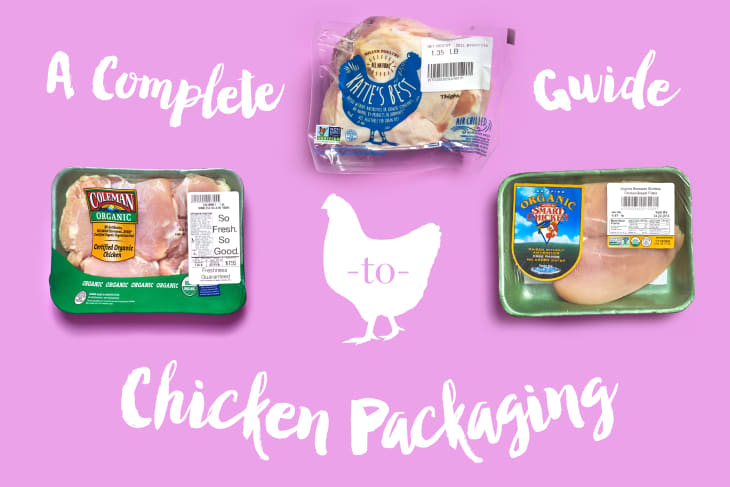A Complete Guide to All the Labels on Chicken Packaging
If you’ve ever felt totally confused when reading the label on a package of chicken, I can guarantee that you’re not alone. Not by a long shot. There are so many terms to know, and it seems like new labeling buzzwords keep popping up. It can be tricky to know what’s important versus marketing buzzwords that don’t actually carry much weight.
Let me walk you through a rundown of the most common terms you’re likely to encounter on packaged chicken, what they actually mean, and what’s really important.
To make this easier to understand, I think it’s helpful to break all these labeling terms into three categories: how the chicken was raised, it’s diet, and how the chicken is processed.
Terms About How Chicken Was Raised
The majority of descriptors that appear on chicken packaging labels relate to how and where the chicken was raised, and helps us glean some insight into the quality of the bird. While some of these terms carry more weight than others, they’re important ones to take note of when shopping.
- Organic: This is a label many of us flock to, but you should know that it doesn’t necessarily mean it’s the best quality or most-humanely raised chicken. The term “organic” is regulated by the USDA, and can only be used when no pesticides or chemical fertilizers are used in the poultry feed, and no antibiotics are used during any stage of production. And, as we mentioned above, all organic chicken must be free-range.
- Free-range: This term is given to chickens that have access to the outdoors for at least part of the day. It’s important to keep in mind, though, that this doesn’t guarantee that the chickens actually go outside — they simply have the option to go outdoors. Chicken labeled as “organic” must also be “free-range,” however not all “free-range” chicken is “organic.” According to the National Chicken Council, less than 1% of chickens raised nationwide are free range.
- Pasture-raised/pastured: While it’s not the most common label you’ll see in the meat department at your local grocery store, it’s definitely one of the better labels to look for. This term suggests that the chicken lived on a pasture with constant access to edible vegetation. In addition to regular feed, these birds also get a portion of their diet from their natural environment, such as grass, seeds, and bugs.
- Farm-raised: Just what it sounds like, this means that the chicken was raised on a farm, as all chickens are. This is mostly a marketing buzzword and often used on restaurant menus to denote locally raised chickens.
- Antibiotic-free/raised without antibiotics: This chicken was raised without antibiotics commonly used for health maintenance, disease prevention, and disease treatment.
- Hormone-free/raised without hormones: The Food & Drug Administration prohibits the use of any type of hormones in the production of all poultry in the U.S. So this term actually applies to all chicken. Any brand of chicken that includes this term on the label must note that no hormones are used in the production of any poultry.
The Chicken’s Diet
You might also see a term on the label that will give you insight into the type of diet the chicken was fed.
- 100% vegetarian diet: This simply means that the chicken was raised on feed free from animal byproducts.
How the Chicken Was Processed
Other terms are indicators about the method in which the chicken was processed and packaged. Some carry more weight then others.
- Air-chilled: Air-chilling refers to a specific method for cooling chickens during processing, and is helpful in preventing bacteria growth. Air-chilling blasts the chickens with purified cold air or rapidly cools them in cold air chambers to reduce body temperature.
- Kosher: This simply indicates that the chicken was prepared under rabbinical supervision.
- Enhanced/seasoned: This is your indicator that chicken contains additional ingredients, like water or marinade. Any time chicken is enhanced, it must clearly be labeled on the package, including the ingredients that were used.
- Natural: This is a misleading marketing term, and actually has nothing to do with how the chicken is raised. It simply means the chicken contains no artificial ingredients, like coloring agents and preservatives.
Learn more: What’s the Deal with Air-Chilled Chicken?
